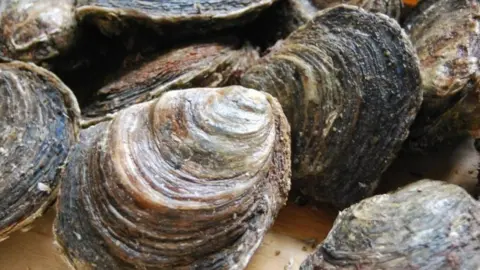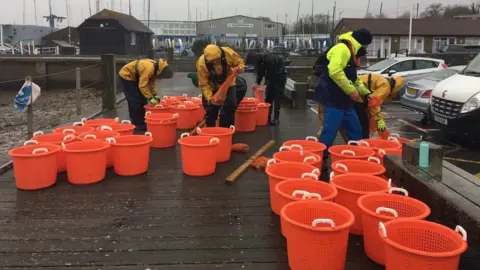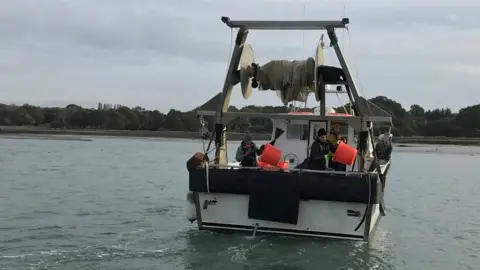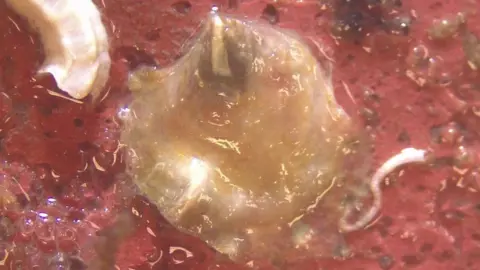Oysters released onto Solent seabed in bid to boost stocks
 Blue Marine Foundation
Blue Marine FoundationUp to 20,000 oysters have been released onto the seabed of the Solent in a bid to revive stocks.
Fishing of the mollusc was banned in the area in 2013 when annual harvests plummeted from 200 to 20 tonnes, in just five years.
Last year, a baby oyster was discovered after Blue Marine Foundation transferred 20,000 of the shellfish to cages at six sites.
The new six-month trial comes ahead of a planned release of one million.
 Blue Marine Foundation
Blue Marine FoundationJacob Kean-Hammerson, of Blue Marine Foundation, described it as a "major highlight" and said the trial would "inform techniques" ahead of the large-scale deployment of oysters next year.
"We have re-laid them at three different densities - of one, five and 10 per sq m - to examine which will be the most successful," he said.
"We hope the juveniles, which are one to two years old, will mature and grow into breeding oysters."
 Blue Marine Foundation
Blue Marine FoundationThe first checks of the trial are expected to take place in March.
The caged oysters started to reproduce in July 2017 and a 5mm baby (spat) was found off Portsmouth last March.
A final report on the project is expected in 2021.
 Blue Marine Foundation
Blue Marine Foundation